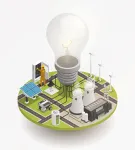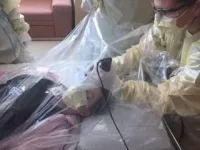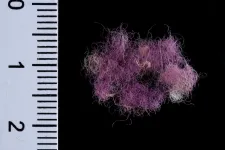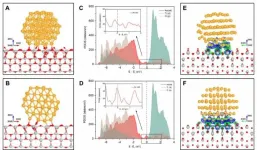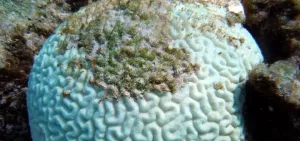(Press-News.org) As states and municipalities begin to roll out mass vaccination campaigns, some people have dared to ask: When will it be safe to resume "normal" activities again? For those in most parts of the United States, the risk of COVID-19 infection remains extremely high.
People now have access to better real-time information about infection rates and transmission at the county or city level, but they still need a framework to help them decide what is safe to do. Social distancing and shutting businesses have reduced the number of cases, but there is mounting pressure to reopen businesses and classrooms.
Life is likely to continue in this limbo for some time. A new model co-authored by a Washington University in St. Louis mathematician helps to contend with the uncertainty.
"People need a way to decide whether an activity is worth undertaking," said John E. McCarthy, the Spencer T. Olin Professor of Mathematics in Arts & Sciences and chair of the Department of Mathematics and Statistics at Washington University.
"We provide a model to estimate the relative infection risks of different activities," he said. "That information can allow decision-makers in industry and government to rank activities according to their relative risk of infection.
"In combination with an understanding of the benefits and costs of those activities, decision-makers can then make informed choices about whether, and if so how, to allow participation in previously forbidden activities."
McCarthy wrote the model, published Jan. 28 in the journal PLOS ONE, along with Barry D. Dewitt at Carnegie Mellon University, Bob A. Dumas at Omnium LLC and Myles T. McCarthy at the University of Illinois at Urbana-Champaign.
The researchers present several example calculations, analyzing the risks of idealized versions of airplane travel, attending a sporting event, sitting in a classroom, going to a restaurant and attending a religious service.
Crucially, the new model breaks up the component parts of such in-person activities -- walking through a turnstile at a stadium, for example, or sitting in one's seat in the stands -- and adds up their contributions to relative risk. This makes the model easy to use and allows the user to quantify the effect of any proposed mitigation strategy.
McCarthy has already been using a version of this formula to help sports franchises to keep the fan experience at stadiums and arenas the safest it can be. In describing this effort, McCarthy said: "We learned pretty quickly two big takeaways: The single most important risk factor in a fan experience is seating; and, with mitigation, the risk in everything else is relatively small."
In the PLOS ONE paper, the mathematicians describe how the model they share is a good approximation of a more refined model in which assumed infections come from a series of independent risks. A linearity assumption governing several potentially modifiable risk factors -- such as duration of the activity, density of participants and infectiousness of the attendees -- makes interpreting and using the model straightforward. The researchers argue that it does so without significantly diminishing the reliability of the model.
This type of decision-making tool will be relevant for months or possibly years ahead, even after the COVID-19 vaccines become more widely available.
"Our approach could be modified to account for estimates of the percent vaccinated of the population of potential participants in an activity," McCarthy said.
"To be a useful decision-making tool, a model must be robust and quantitative," he said. "All activities outside one's home have some risk. To make an informed decision on what activities to engage in and which ones to avoid, we need some way to estimate the relative risks of different activities and of different ways of managing a given activity."
INFORMATION:
A University of Otago study explored factors which influence Americans' levels of concern over climate change, providing discussion on how those factors could impact mitigation efforts.
A key thread of the research examined the ability of people to visualize the future. Results showed that while 74 per cent of respondents were concerned about climate change, only 29 per cent discussed lower carbon options when asked to describe travel in the year 2050.
"This suggests actively envisioning a sustainable future was less prevalent than climate change concern. So while the majority were concerned, ...
UNIVERSITY PARK, Pa. -- People who do not accept inequality are more likely to negatively evaluate companies that have committed wrongdoings than people who do accept inequality, and this response varies by culture, according to researchers at Penn State. The team also found that companies can improve their standing with consumers when they offer sincere apologies and remedies for the harm they caused to victims.
"Some prominent examples of company moral transgressions include Nike's and Apple's questionable labor practices in developing countries, BP's oil spill in the Gulf of Mexico and Volkswagen's emissions scandal," said Felix Xu, graduate student in marketing at Penn State.
In their paper, which published on Jan. 22 in the Journal of Consumer Research, the team ...
Thermoelectric materials, which can generate an electric voltage in the presence of a temperature difference, are currently an area of intense research; thermoelectric energy harvesting technology is among our best shots at greatly reducing the use of fossil fuels and helping prevent a worldwide energy crisis. However, there are various types of thermoelectric mechanisms, some of which are less understood despite recent efforts. A recent study from scientists in Korea aims to fill one such gap in knowledge. Read on to understand how!
One of these mechanisms mentioned earlier is the spin Seebeck effect (SSE), which was discovered in 2008 by a research team led by Professor Eiji Saitoh from Tokyo University, Japan. The SSE is a phenomenon in which ...
DALLAS - Jan. 28, 2021 - Simulation can be a viable way to quickly evaluate and refine new medical guidelines and educate hospital staff in new procedures, a recent study from UT Southwestern's Department of Pediatrics shows. The findings, published recently in the journal Pediatric Quality and Safety and originally shaped around new COVID-19-related pediatric resuscitation procedures at UTSW and Children's Health, could eventually be used to help implement other types of guidelines at medical centers nationwide.
For decades, U.S. hospitals have used the same standard procedures ...
"King Solomon made for himself the carriage; he made it of wood from Lebanon. Its posts he made of silver, its base of gold. Its seat was upholstered with purple, its interior inlaid with love." (Song of Songs 3:9-10)
For the first time, rare evidence has been found of fabric dyed with royal purple dating from the time of King David and King Solomon.
While examining the colored textiles from Timna Valley - an ancient copper production district in southern Israel - in a study that has lasted several years, the researchers were surprised to find remnants of woven fabric, a tassel and fibers of wool dyed with royal purple. Direct radiocarbon ...
(For Immediate Release--Singapore--January 28, 2021)-- In the phase II CodeBreak 100 trial, sotorasib provided durable clinical benefit with a favorable safety profile in patients with pretreated non-small cell lung cancer (NSCLC) and who harbor KRAS p.G12C mutations, validating CodeBreak 100's phase I results, according to research presented today at the International Association for the Study of Lung Cancer World Conference on Lung Cancer.
Outcome in patients with advanced NSCLC on second- or third-line therapies is poor, with a response rate of less than 20% and median progression-free survival of fewer than four months. Approximately 13% of patients with lung adenocarcinomas harbor KRAS p.G12C mutations.
Sotorasib is a first-in-class small molecule that specifically ...
An international joint research team from the Shanghai Advanced Research Institute of the Chinese Academy of Sciences, along with Zhejiang University and the Technical University of Denmark, reported an in-situ strategy to manipulate interfacial structure with atomic precision during catalytic reactions. Results were published in the latest issue of Science.
The interface between nanoparticles and substrates plays a critical role in heterogeneous catalysis because most active sites are located at the perimeter of the interface. It is generally believed that this interface is immobile and unchangeable, thus can hardly be adjusted in reactive environments. As a result, it has been challenging to promote catalytic activity through precise control of the interfacial ...
The emergence of SARS-CoV-2 virus variants that are adding twists in the battle against COVID-19 highlight the need for better genomic monitoring of the virus, says Katia Koelle, associate professor of biology at Emory University.
"Improved genomic surveillance of SARS-CoV-2 across states would really help us to better understand how the virus causing the pandemic is evolving and spreading in the United States," Koelle says. "More federal funding is needed, along with centralized standards for sample collection and genetic sequencing. Researchers need access to such metadata to better track how the virus is spreading geographically, and to identify any new variants ...
BOSTON -- Routine screening of asymptomatic health care personnel (HCP) in the absence of confirmed exposures to COVID-19 is not a recommended strategy for preventing transmission of the coronavirus causing the current global pandemic, according to a new review co-authored by an infectious disease specialist at Massachusetts General Hospital (MGH). The review, published in Infection Control & Hospital Epidemiology, found that such testing is unlikely to affect the transmission of SARS-CoV-2 in health care settings and could even have unintended negative consequences.
Many universities, sports leagues and other institutions require individuals in their organization to undergo routine testing for COVID-19, whether or not they are experiencing symptoms. Current public ...
When thick, the surface layer of the ocean acts as a buffer to extreme marine heating--but a new study from the University of Colorado Boulder shows this "mixed layer" is becoming shallower each year. The thinner it becomes, the easier it is to warm. The new work could explain recent extreme marine heatwaves, and point at a future of more frequent and destructive ocean warming events as global temperatures continue to climb.
"Marine heatwaves will be more intense and happen more often in the future," said Dillon Amaya, a CIRES Visiting Fellow and lead author on the study out ...

